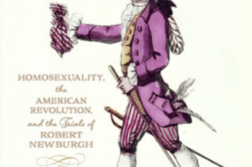SINCE THEIR CREATION in the 1980’s as a parallel social service system to serve HIV-positive gay men, AIDS service organizations (ASOs) have wrestled with questions of what they are and who they serve. But never in their five distinct “identity crises” have ASOs been less certain than they are today of their very survival as freestanding community-based agencies. Beginning with the advent of highly active antiretroviral therapy (haart, better known as “combination treatment” or “the cocktail”), ASOs have struggled to stay relevant as single-disease entities. As the HIV epidemic in America continues to shift from middle-class gay men to lower-income people of color—largely gay and bisexual men—it has become harder to justify the need for agencies focused only on those with HIV when clients’ needs have more to do with their income than with their HIV status.
The first ASOs struggled over whether they should mainly provide services to sick people with AIDS or advocate for political change. By the late 80’s, there was disagreement, even rancor, over just how “professional” the formerly volunteer-run organizations should be. The infusion of hundreds of millions of dollars from the 1990 Ryan White Care Act brought on a third identity crisis as the attached strings tied many ASOs in knots sorting out whether they were “AIDS” or “gay” organizations. The 1996 arrival of haart meant many formerly ill people no longer needed most of the services ASOs provided. The latest, perhaps the last, ASO identity crisis has brought the organizations full circle to two fundamental questions: Do HIV-positive people today need our own service agencies? Or can services for HIV-positive people be more efficiently and cost-effectively integrated into existing social service organizations?





